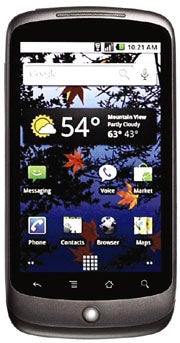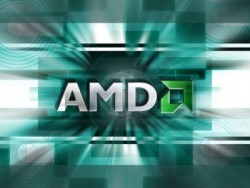
LAS VEGAS – Intel on Thursday officially unveiled its new, 32-nanometer family of processors at the Consumer Electronics Show (CES) here, including the Core i7, i5, and i3 processors, the Intel 5 Series chipsets, and Intel Centrino Wi-Fi and Wimax adapters.
Intel chief executive Paul Otellini took the stage at a CES keynote to discuss how computing is no longer confined to the PC and is becoming increasingly mobile – an advance made possible via Intel processors, of course.
"These advances are bringing us into a new era of computing where we have many devices per person and computing is increasingly [integrated]," Otellini said during a keynote address. "We're focused on making all computing personal."
Overall, Intel introduced 25 new products. The new processors will be manufactured in 2010 using the 32-nanometer process, which is intended to improve computer speed and decrease energy consumption. Intel first announced plans for these microprocessors, known as "Westmere," in February 2009. Dell, among others, has already announced its first products based on the technology.
The company released 11 mobile processors, six desktop processors, and four wireless adapters.
On the mobile front, prices range from $225 for a 2.4-GHz Core i5 520M to $332 for a 2.66-GHz Core i7 620M or a 2.13-GHz Core i7 640LM. Desktop versions range from $113 for a 2.9 GHz Core i5 530 to $284 for a 3.46 GHz Core i5 670. Pricing was not provided for the wireless adapters.
The Core i7 and i5 processors will include Intel's Turbo Boost technology, which promises to accelerate performance and adjust to a user's workload as needed. It "gives you better performance when you need it and lower power when you don't," Otellini said.
Meanwhile, a technology known as "Hyper Threading" – which allows each processing core to run multiple threads, will be available on the Core i7, i5, and i3.
Technology that was available three years ago only to major Hollywood studios is now "in the hands over everyday consumers," Otellini said.
The Intel 5 Series chipset, meanwhile, is Intel's first single-chip chipset. It includes power-saving techniques, all based on a principle Intel calls "HUGI," or "Hurry Up and Get Idle".
The 2010 Core family is the first to include graphics within the processor. The Intel HD Graphics support will let computer users access mainstream and casual 3D gaming without an additional video card.
For those gamers with very graphics-intense games, the Intel Switchable Graphics will let users automatically switch between Intel's integrated graphics to a discrete version that promises optimal battery life and performance – without having to reboot.
On the wireless front, Intel's new wireless adapters include 802.11n multi-streaming capabilities and dual-band support for Wi-Fi, which Intel says will offer up to eight times greater speed. The integrated WiMAX/Wi-Fi adapter supports the 2.3-, 2.5-, and 3.5-GHz WiMAX bands, which can produce up to 20 Mbit/s.
During his keynote, Otellini demonstrated Intel Wireless Display, or WiDi, which will stream high-definition video from your PC to the TV. The technology works on computers with Core i7, i5, and i3 processors and a separate adapter box, priced around $100. Intel used a box from Netgear and streamed an episode of "Lost" via Netflix from a PC to an HDTV using WiDi.
Laptops from Dell, Sony, and Toshiba, as well as the Netgear adapter, with Intel WiDi will be available at Best Buy starting Jan. 17.
Intel will also take advantage of the apps craze with an apps store for netbooks called the Intel AppUp Center, available on Windows- and Linux-based devices.
"Netbooks have clearly created a new usage model in computing and that creates an opportunity for a new wave of software apps," Otellini said.
A beta version of the store is live now at IntelAppUp.com. Acer, Asus, Dell, and Samsung have "committed to build AppUp Center storefronts" in their devices in the coming months, Otellini said. While the initial focus will be netbooks, Otellini expected the store to eventually also appear on PCs, handheld devices, smartphones, TVs, and other devices.
Intel also unveiled a lineup of embedded devices intended to improve performance for enterprise devices like ticket kiosks, ATM machines, self-checkout systems, and medical equipment.
Otellini also demoed a device that works as a virtual storefront. Walk up to it and it will automatically detect your height for easy touch access, as well as your gender. The screen will show you items that are available in the store beyond the glass. If you see something you like have it sent to your phone.
Other demos included the upcoming LG GW990 smartphone as well as a combination phone-tablet from OpenPeak, both of which will include the "Moorestown" smartphone platform. Moorestown is scheduled to launch in the first half of the year, with products coming to market in the second half.
And then there's 3D. "I think 3D … is the next thing that's poised to explode in the home," Otellini said. "In 2010, there will be 50 3D movies released, versus 20 in 2009. Sports and video games and concerts are all being filmed and generated in 3D. The 2010 world cup will be recorded and broadcast in 3D."
That's good news for Intel, Otellini said, because "creating and managing 3D content requires a ton of computing" and "increasing quality requires more and more compute cycles."

![]()
























